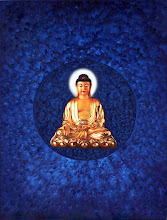By Ashish Jeevne
Hindu upper caste men, who are barely 8 per cent of the country’s population, have a majority share of 71 per cent among top media professionals in the country. The findings are based on a survey of the social background of 315 key decisionmakers from 37 “national” media organisations (up to 10 from each) based in Delhi. The survey was carried out by volunteers of Media Study Group between May 30 and June 3 this year. It was designed and executed by Anil Chamaria, freelance journalist, and Jitendra Kumar, independent researcher, from Media Study Group, and Yogendra Yadav, senior fellow, Centre for the Study of Developing Societies (CSDS).
Muslims, who are 13 per cent of the population, are under-represented at the decisionmakers level with only 3 per cent. In the English electronic media, in fact, there are none.
Christians, who make up 2 per cent of the country’s population, are absent in the Hindi print media.
“Twice born” Hindus (or, dwijas) comprising Brahmins, Kayasthas, Rajputs, Vaishyas and Khatris are about 16 per cent of India’s population, but they are 86 per cent of the key media, decisionmakers in the survey. Brahmins (including Bhumihars and Tyagis) alone, constitute 49 per cent of the key media personnel. Hindu OBCs who are 34 per cent of the country’s population are only 4 per cent of the top media personnel, Scheduled castes and scheduled tribes who constitute 16 per cent and 8 per cent respectively of the country’s population are absent from the list of key media personnel.
Brahmins (including Bhumihars and Tyagis) dominate the national media. The dominance is severe in the case of Hindi print, where they occupy 59 per cent positions. In one Hindi newspaper all the top 10 slots are occupied by Brahmins. In English electronic, Hindi electronic and English print, the share is 52 per cent, 49 per cent, and 44 per cent respectively.
OBCs are the least in the English print with only 1 per cent.
The newspapers and news magazines surveyed were Hindustan Times, the Times of India, the Economic Times, the Hindu, the Indian Express, the Financial Express, India Today, Outlook, Outlook (Hindi), Dainik Hindustan, Navbharat Times, Jansatta, India Today (Hindi), Rashtriya Sahara, and Dainik Jagaran.
The television channels studied were NDTV 24×7, NDTV Profit, NDTV India, Star News, CNBC, CNBC AWAZ, CNN-IBN, Sahara Samay, Times Now, S-1, Janmat, Aaj Tak, Headlines Today, DD News, Zee News, and IBN-7. The other news establishments were PTI, PTI Bhasha, UNI, Univarta, ANI, and BBC Radio Hindi. The researchers did not have any data about decisionmakers in All India Radio, the Pioneer, and Tehelka.
ASHISH JIWANE
BAMCEF MIDDLE EAST CO-ORDINATOR
BAMCEF INTERNATIONAL NETWORK
(INTERNATIONAL WING OF BAMCEF)
visit us at www.bamcef.org
Thursday, August 13, 2009
Subscribe to:
Post Comments (Atom)

The Kayasthas and Kshatriyas are not Dwijas. The distinction only belongs to Brahmins.
ReplyDeleteThe Kayasthas rose to prominence in the Indian society due to their skill of accounting and office work despite being regarded as Shudras by the Brahmins.
The Kaysthas did this without any reservations and this achievement of the Kaysthas cannot be belittled.